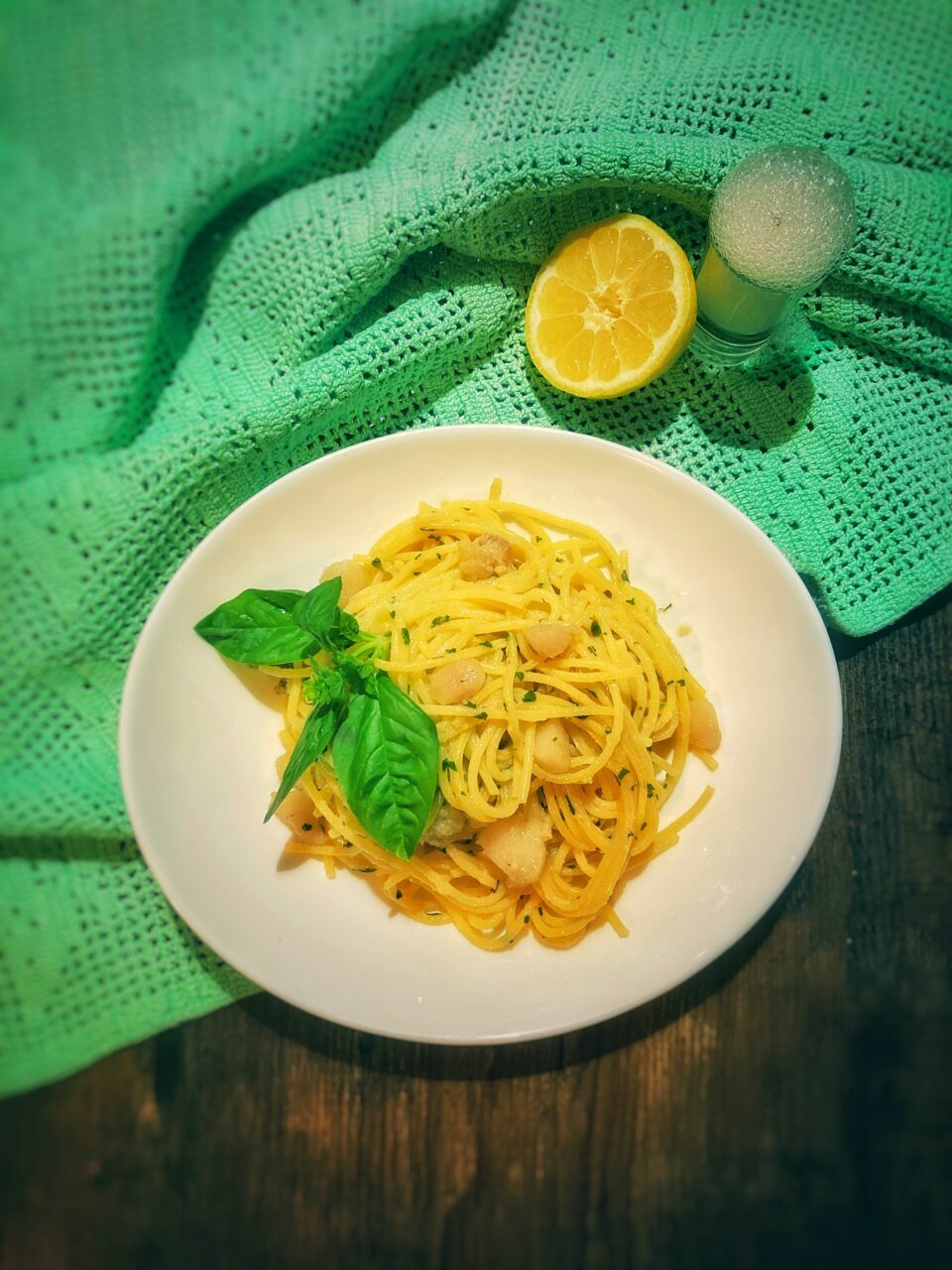Pasta allardiata or lardiata is a poor dish of the Neapolitan peasant tradition, so poor that it did not even include olive oil, in fact lard was used, considered almost a waste food, and tomato, and sometimes not even that, for a version white like mine.
▶ The first step is to “lace” the lard (create a sort of cream-mush) with a pinch of chilli pepper and basil leaves.
▶Usually short pasta is used, or broken ziti, but I prefer using spaghetti.

- DifficoltàMedia
- Tempo di preparazione10 Minuti
- Tempo di cottura11 Minuti
- Porzioni2 persons
- Metodo di cotturaFornelloBollitura
- CucinaItaliana
- StagionalitàTutte le stagioni
Ingredienti
Strumenti
Passaggi
Chop the lard with the basil and chilli pepper.
In a pan, fry the garlic in a little oil, add the lard mixture, let it melt until it creates a sort of cream/mush.
Cook the pasta “al dente”, stir it in the lard cream for a few minutes.
Serve with a sprinkling of pecorino.



FAQ (Domande e Risposte)
Which is the differece between lardo di colonnata and lardo di Ardad?
Colonnata lard has made the Tuscan town from which it takes its name famous.
The quality of the lard depends on the choice of raw materials (from the quality of the “fresh fat”, which must be from heavy pigs, to the aromas with which it is rubbed) and on the seasoning, which is still done today in marble tubs (conche) in which the product remains for approximately 6 months.
Arnad lard, typical of the lower Aosta Valley, unlike that of Colonnata, was seasoned in chestnut wood tanks (doils) with particular joints that did not allow the brine to escape and is still flavored today with aromas such as juniper , bay leaf, nutmeg, sage, cloves, cinnamon, yarrow.
Today glass tanks are used.
It is obtained from pork shoulder lard (the animal weighing at least 160 kg and aged no less than 9 months), whose meat must be pink and without stains.
The weight varies from 3 ounces to 4 kg, the shape is a quadrangular slice.
Dosi variate per porzioni

